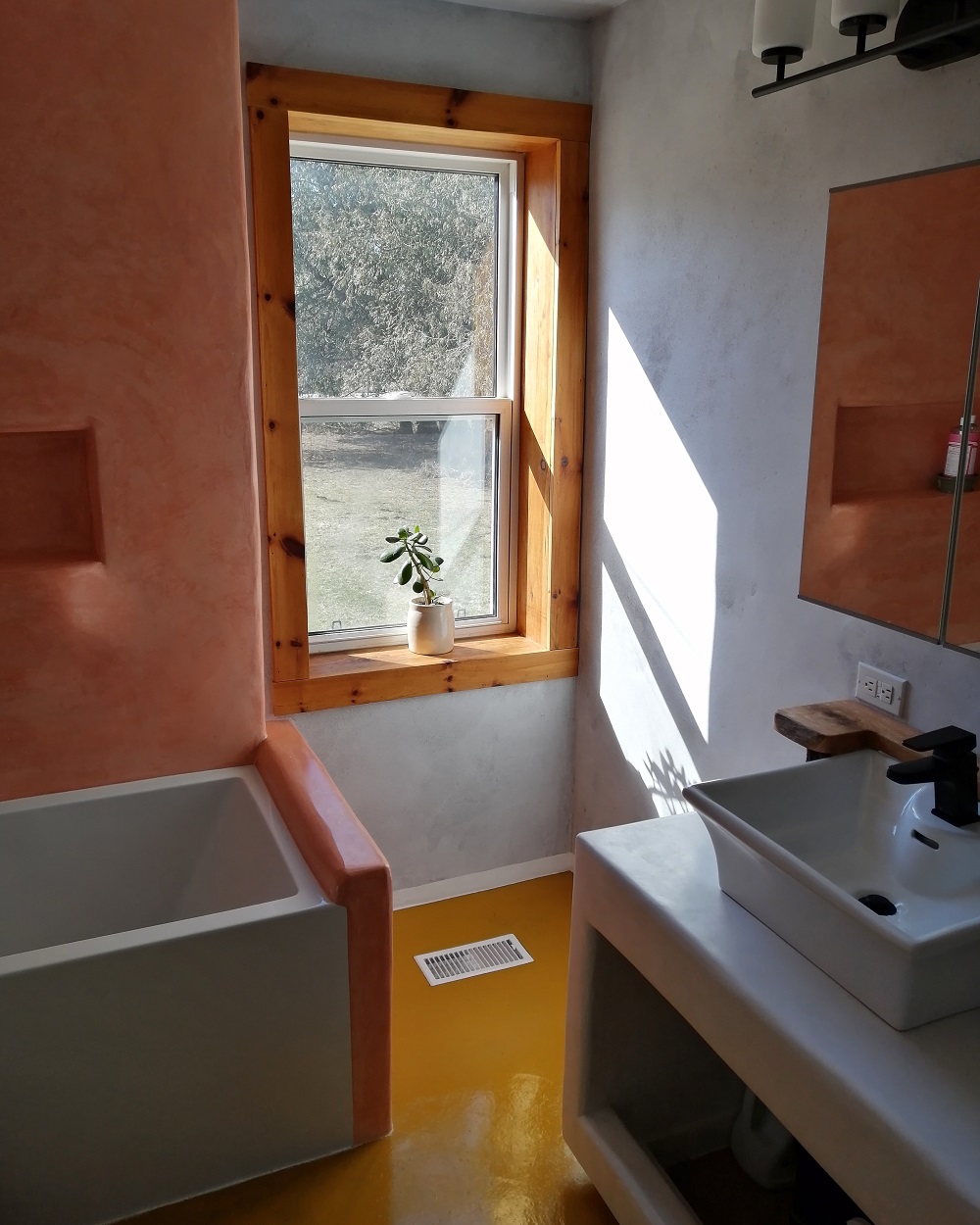If you’ve chosen to build or renovate using natural plasters, get ready to enjoy the extended health benefits for you and the environment.
“Natural plasters can provide extraordinary comfort,” said Sebastian Renel, owner of Beyond Plasters in Minden Hills and a master craftsman in the art.
“They can create a close connection to the natural world with calming and healing effects. They can help regulate temperature and humidity in homes. They create harmonious spaces and eliminate toxins from our indoor spaces.”
After studying science and fine arts in university, Renel trained as a master craftsman in Japan and holds his certification in Sustainable Building Design and Construction from Fleming College. He is currently partnering with U-Links Centre for Community-Based Research in Minden to further study the benefits of clays and limes in natural plasters.
Renel said the earthen materials used in natural plasters have been among the most popular choices for shelters for “virtually all of human history.”
“Even today, approximately half of the world’s people inhabit shelters fashioned from clay-rich dirt harvested from the Earth’s crust.”
Natural plaster applications are increasing in popularity due to the benefits listed and several more, according to Renel.
For example, clay plasters can screen electromagnetic radiation from computers, televisions and other home appliances. Clay releases negative ions, increasing the freshness of the air in the home. Earthen floors literally help owners feel more grounded, and adding radiant heat provides the ultimate in comfort.
Natural plasters have a very low carbon footprint. Lime will also reabsorb the carbon dioxide it has released during its manufacturing process, which technically makes it a carbon-neutral material. Sourcing materials in Ontario is “very feasible” and sometimes on-site clays can be used.
Applications for natural plasters also include exterior surfaces, ovens, new fireplaces, fireplace remodelling and feature walls, including frescos.
“Mixing and applying natural plasters is a bit like cooking – there are an infinite number of recipes possible,” said Renel.
The most popular – a skim coat over existing drywall – can be smooth and highly polished and “provide a very Zen feel.” Bulkier coats can go on up to one inch thick and provide more texture for a rustic look. Tadelakt plaster is highly water-resistant and can be used for showers, cabinets and backsplashes.
“All these finishes can be customized with natural pigments or finished with natural oils that improve durability,” said Renel. “Fibres such as straw or cattails … help with tensile strength and sometimes create a desirable effect on the surface. If you can imagine it, it can be done.”
In addition to drywall, natural plasters can be applied over wood lath, straw bales, masonry walls and more. The process can vary depending on the scope of the project, thickness of plaster and desired finish or texture. Overall prices range from $6 to $40 per sq. ft.
Renel noted the process can take more time than traditional surfacing, especially for floors, since drying time is required between layers. However, he added, “the qualities of the finished surfaces are far superior compared to some of the conventional paints and other synthetic materials.
“In other words, the finished product is well worth the investment.”





